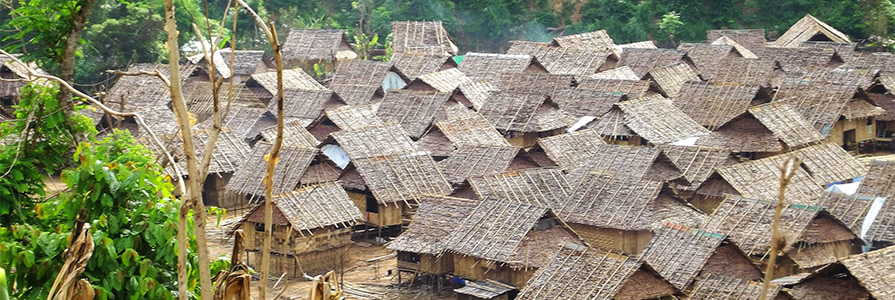
Ban Mae Surin
Location
Khun Yuam Sub-district, Khun Yuam District, Mae Hong Son Province
Distance from Border
3 km in a straight line, 8½ kms down the Mae Surin River
Distance from Mae Hong Son
90 km. Approx. 3 hours driving time in normal conditions
Distance from Mae Sariang
99 km. Approx. 3½ hours driving in normal conditions
Accessibility
Car: Generally all year round access, 4WD required in the rainy season. Local rivers can swell making access impossible.
Phone: No mobile phone coverage
Note: Due to severe restrictions of access to this camp, explicit permission papers are required.
Camp Geography
Area 190 rai (30 ha)
Introduction and History

Ban Mae Surin has a population of around 2,300 persons, some 88 percent of whom are ethnic Karen/Kayin. Around 11 percent are ethnic Karenni/Kayah.
The camp is in a remote location that is difficult to access and it maintains strong characteristics of the villages across the border where residents formerly lived.
Refugees were first located at this location along the Mae Surin River in November 1991. The site has been the centre of many smaller refugee camp consolidations since.
In January 1993, most residents of the former Karenni/Kayah Camp 4 moved to Ban Mae Surin. In the following year, some 300 people from another camp located further downstream also moved here.
A further almost 500 people moved here in 1998, when many of the smaller camps along the Salween River were consolidated (most people went to what is now Mae La Oon camp).
In March 2013, Ban Mae Surin camp suffered the worst-ever fire in the history of the refugee camps. Tragically, 37 people lost their lives and 200 families were made homeless. The camp has since rebuilt and the community has made outstanding efforts towards recovery. A few years ago, former camp leader Shally Than recalled the huge recovery effort after the very sad occasion for everyone in the camp.
Due to its isolation, the camp is off the mains electricity grid. The camp office and health and education centres in the camp have access to power from electric generators. Hydro electricity is widely generated, mainly to recharge vehicle batteries to power household lighting.
In 2005, the Royal Thai Government gave approval for resettlement opportunities to be offered to camp residents. As of September 2018, a total of 2,634 people had departed from the camp, according to IOM data. The majority resettled in the USA and Australia.


